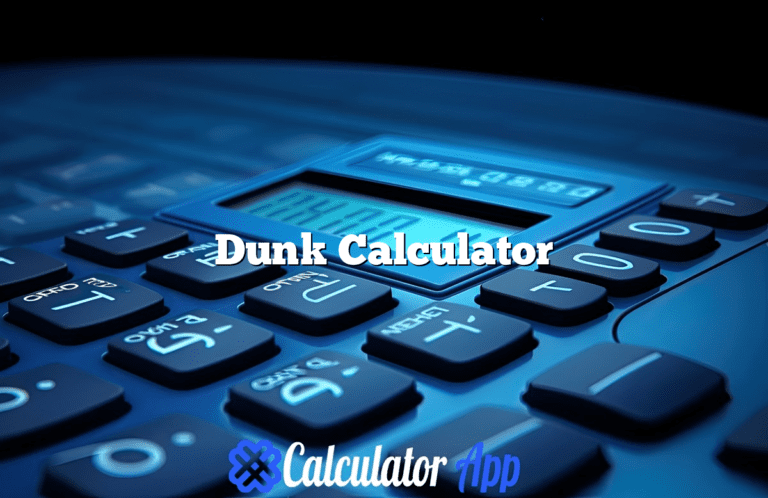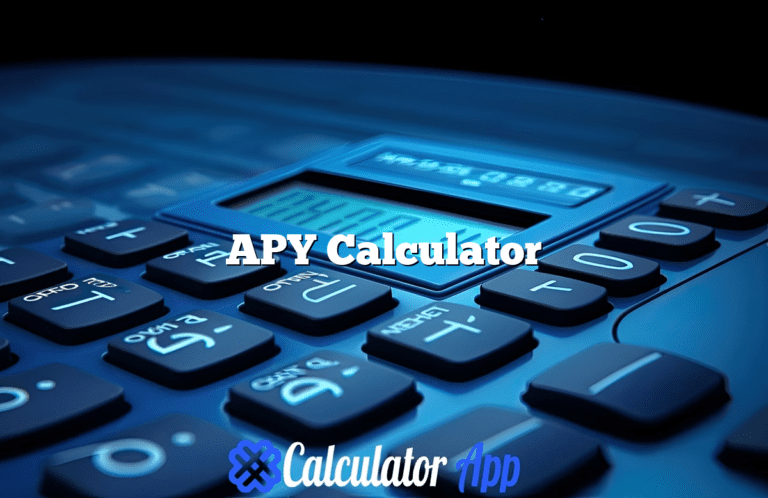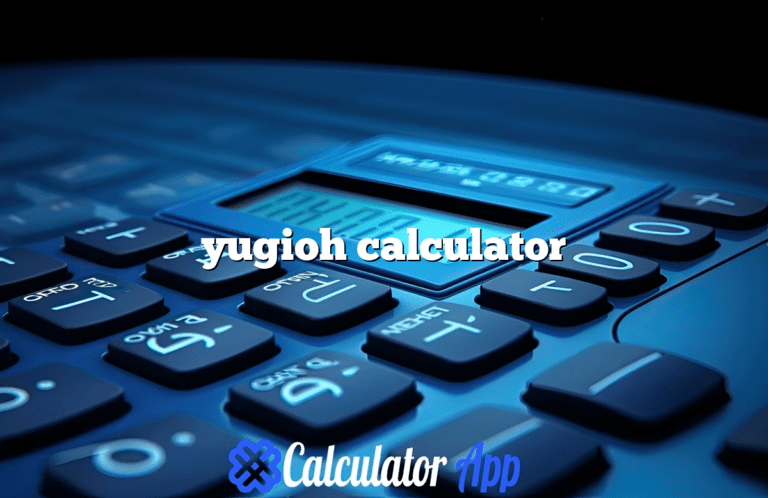Combinations \( nCr \) Calculator
Introduction to the Combinations Calculator (nCr)
The combinations calculator, commonly referred to as nCr, is a powerful mathematical tool used to determine the number of ways to choose a subset of items from a larger set, where the order of selection does not matter. This concept is foundational in combinatorial mathematics and has widespread applications in fields such as statistics, probability theory, and various practical scenarios, including event planning, gaming strategies, and stock market analysis.
At its core, the nCr formula is defined mathematically as n! / (r! * (n – r)!), where n represents the total number of items and r denotes the number of items to choose. The exclamation mark denotes factorial, which is the product of all positive integers up to that number. By utilizing this formula, anyone can efficiently compute combinations without having to manually enumerate all possible selections, which can quickly become impractical as n increases.
The significance of the combinations calculator lies in its ability to simplify complex calculations and provide quick, accurate results. For instance, in a scenario where an organizer must select a team from a pool of candidates, the nCr calculator allows for immediate insight into how many possible teams can be formed. This not only saves time but also enhances the decision-making process, whether in business, academics, or other fields.
Moreover, the nCr calculator is accessible and user-friendly, enabling individuals without a strong mathematical background to perform these calculations with ease. As we delve deeper into the workings of the combinations calculator, we will explore its various applications and benefits, demystifying its role in both theoretical and practical contexts. Understanding how to utilize nCr will empower users to make informed decisions based on quantitative analysis, ultimately enhancing their strategic planning capabilities.
Features of the Combinations Calculator
The combinations calculator, often denoted as nCr, is an essential tool in combinatorial mathematics. It provides users with the ability to compute combinations quickly and efficiently, which is particularly useful in various fields such as statistics, probability, and computer science. Below are some key features that highlight the significance of this calculator:
- Accuracy: One of the primary advantages of the combinations calculator is its precision. Manual calculations can often lead to errors, especially when dealing with larger numbers. The calculator eliminates this risk by providing the correct combinations result every time.
- Time Efficiency: For individuals or businesses that require quick computations, the combinations calculator drastically reduces the amount of time needed to solve complex problems. Instead of laboriously working through factorial calculations, users can obtain results within seconds.
- Ease of Use: Designed with user experience in mind, the calculator is highly intuitive. Users need only input their desired parameters, such as the total number of items (n) and the number of items to choose (r), to receive immediate results without requiring advanced mathematical skills.
- Versatility: The combinations calculator is not limited to just academic use; it can be a valuable asset in industries like finance, marketing, and operations research. Whether determining team formations, marketing combinations, or project management tasks, the functionality of this tool extends across multiple applications.
- Instant Results: With a combinations calculator, results are generated instantly, facilitating a seamless workflow for students, professionals, and researchers alike.
Incorporating a combinations calculator into your toolkit enhances not only productivity but also confidence in mathematical endeavors. Overall, leveraging its features can significantly optimize various combinatorial calculations in a routine and efficient manner.
Understanding the Importance of the Combinations Calculator
The combinations calculator, often denoted as nCr, plays a crucial role in the fields of mathematics, statistics, and various practical applications. Its primary function is to determine the number of ways to choose a subset of items from a larger set, without regard to the order of selection. This capability is particularly essential in combinatorial problems, where the selection of items significantly affects outcomes. By utilizing the combinations calculator, users can streamline their problem-solving processes and arrive at solutions more efficiently.
One of the significant advantages of a combinations calculator is that it removes the complexity involved in manual calculations. Without such a tool, determining combinations would require a deeper understanding of factorial mathematics, which can often be cumbersome. The calculator simplifies this process, offering an intuitive interface that allows users to input values effortlessly and obtain instantaneous results. This feature is invaluable for students, professionals, or researchers who need quick calculations without extensive mathematical background.
The applications of the combinations calculator extend beyond academia. In fields like finance, marketing, and project management, understanding combinations can inform decision-making processes. For example, in product development, teams can utilize the calculator to assess different marketing strategies based on varying combinations of features. Similarly, event planners can use it to determine potential guest lists or seating arrangements. The practicality of this tool enhances its importance, as it embodies a user-centric design that caters to both casual users and professionals alike.
In light of these advantages, incorporating a combinations calculator into your toolkit can significantly boost productivity and understanding in endeavors that rely on combinatorial math. As users familiarize themselves with the calculator’s functionalities, they will find that it enhances not only accuracy but also confidence in handling complex combinatorial challenges.
How to Use the Combinations Calculator: A Step-by-Step Guide
Utilizing the combinations calculator, specifically designed for calculating nCr, is straightforward and user-friendly. The following guide outlines the essential steps to ensure effective use of this valuable tool.
Firstly, identify the values necessary for input, namely \( n \) and \( r \). The variable \( n \) refers to the total number of items available, while \( r \) represents the number of items to choose from. It is crucial to ensure that \( n \) is greater than or equal to \( r \) in order to obtain valid results. Once these values are determined, the next step is to enter them into the designated fields of the combinations calculator.
After inputting the values, examine any additional settings or options available. Some calculators provide functionalities such as calculating permutations, factorials, or incorporating repetition. If your analysis requires considering different scenarios, these settings can be adjusted accordingly. Familiarizing yourself with these options can enhance the robustness of your calculations. (See Also: Wind Chill Calculator)
Once all relevant inputs and settings have been established, proceed to initiate the calculation by clicking the designated button. Most calculators will display the result almost instantaneously. The output will typically include the number of possible combinations represented by \( nCr \), which quantifies how many different ways one can select \( r \) items from a total of \( n \).
For users who desire further clarity, many combinations calculators also provide step-by-step breakdowns of the calculation process. This can be particularly beneficial for educational purposes or for those keen on understanding the underlying mathematics behind the combinations formula.
In summary, mastering the combinations calculator involves understanding value inputs, leveraging available settings, and interpreting the results accurately. By following these steps, users can efficiently utilize the combinations calculator to facilitate various combinatorial analysis tasks.
Benefits of Using the Combinations Calculator Over Manual Methods
The utilization of a combinations calculator (nCr) presents several advantages when compared to traditional manual calculation methods. One of the primary benefits is the significant reduction in time and effort required to solve combinatorial problems. In manual calculations, particularly for larger values of n and r, the factorial computations can become tedious and complex. A combinations calculator simplifies this process to a few clicks, allowing users to obtain results quickly and efficiently.
Another important advantage of using a combinations calculator is the minimization of human error. Manual calculations are prone to mistakes, particularly when it involves multiple steps and calculations, such as handling factorials and ensuring the correct order of operations. A calculator eliminates this risk, providing accurate results that enhance reliability. This accuracy is particularly important in fields such as statistics, probability, and computer science, where precision is paramount.
Furthermore, a combinations calculator offers accessibility and convenience. Many academic and professional scenarios necessitate frequent calculations of combinations for tasks such as statistical analysis, game theory, and algorithm design. By having a calculator readily available, users can streamline their workflow and focus more on analysis rather than on computation. This is especially advantageous for students, educators, and professionals who deal with combinatorial problems regularly.
In addition, interactive features in online combinations calculators often allow users to visualize results or track different scenarios quickly. This aids in exploring various combinations without the need to start over with manual calculations each time. The enhanced visualization also helps in understanding concepts better, fostering deeper learning and comprehension.
In conclusion, it is evident that the combinations calculator not only saves time and enhances accuracy but also provides significant convenience and improved understanding compared to manual calculation methods. Its advantages make it an invaluable tool for anyone dealing with combinatorial mathematics.
Practical Applications of the Combinations Calculator
The combinations calculator, often denoted as nCr, serves as an invaluable tool across a myriad of fields, highlighting its versatility in practical applications. One of its most prominent uses is in statistical analysis, particularly within areas involving probability. For instance, a researcher may use the calculator to determine how many ways a sample of individuals can be chosen from a larger population. This application is crucial in experimental designs and helps in ensuring that the results are statistically sound.
Another notable application is found within the realm of sports, particularly during tournaments and competitions. For example, when organizing a round-robin tournament, the combinations calculator assists in determining the number of possible matches that can occur, based on the number of teams participating. This application is vital for event organizers, allowing them to schedule matches effectively and anticipate the format required to complete the tournament.
Moreover, in the fields of finance and risk assessment, the combinations calculator is employed to evaluate investment portfolios. Investors frequently need to assess various combinations of assets to construct an optimal portfolio. By utilizing the nCr tool, analysts can explore the possible combinations of investments, thus identifying the configurations that align with their risk tolerance and expected returns.
In the world of cryptography, the combinations calculator aids in determining the number of possible keys that can be generated given a certain set of characters. This application is pivotal, as it directly influences the strength and security of encryption methods. Understanding the combination possibilities allows cryptographers to devise stronger security protocols.
From sports and finance to statistics and cryptography, the practical applications of the combinations calculator are vast and varied, demonstrating its importance across different sectors. Mastering its use can significantly enhance decision-making processes, risk management, and strategic planning. (See Also: RPE Calculator)
Why the Combinations Calculator Stands Out: Unique Selling Points
The combinations calculator, commonly known as nCr calculator, plays a pivotal role in the realm of combinatorial mathematics. Its unique features and advantages make it a valuable tool for both professionals and students alike. One primary distinct aspect of this calculator is its user-friendly interface, allowing individuals with varying levels of expertise to easily navigate and utilize the tool. Unlike many other calculators that require advanced knowledge of formulas and combinatorial principles, the nCr calculator simplifies the process, making it accessible to a wider audience.
Another notable selling point is the accuracy of calculations it offers. In combinatorial math, even a minor miscalculation can lead to vastly different outcomes, especially in fields such as statistics and probability. The combinations calculator ensures high precision in computing combinations, thereby enhancing the reliability of results. This accuracy not only helps users save time but also boosts their confidence in utilizing the results for further analysis.
Furthermore, the nCr calculator comes equipped with robust features that often surpass those found in competing tools. Many calculators limit users to basic functionality, whereas this calculator provides additional options such as batch processing and step-by-step explanations. Such features cater to diverse user needs, whether they require a quick answer for a simple problem or a comprehensive breakdown of the calculation process for educational purposes.
Moreover, this calculator stands out due to its versatility in applications. It can be employed across a variety of fields, including mathematics, computer science, economics, and even game theory. This range of applications reinforces the tool’s importance and necessity for anyone dealing with combinatorial problems. Overall, the combinations calculator is not just another computation tool; its unique advantages differentiate it as an essential resource in tackling combinatorial challenges effectively.
Tips and Troubleshooting for Using the Combinations Calculator
Utilizing a combinations calculator, or nCr calculator, can significantly simplify the process of determining the number of ways to choose a subset from a larger set. However, users may encounter challenges while using these tools. This section presents valuable tips and troubleshooting advice to enhance your experience and to ensure accurate results.
Firstly, it is essential to double-check the values entered into the calculator. Ensure that both the total number of items (n) and the number of items to choose (r) are correctly inputted. Misentering these figures can lead to incorrect calculations, resulting in confusion. It is also advisable to review the mathematical formula that the calculator employs. Understanding the fundamentals of combinations, which is grounded in the formula n! / [r!(n-r)!], can help in validating the results and developing a stronger grasp of the process.
Another helpful tip is to use a reliable and user-friendly combinations calculator. There are many online tools available, but their user interfaces can vary significantly. Choose a calculator that clearly indicates where to input your values and offers step-by-step explanations of the computations. This feature can be particularly helpful for beginners trying to understand the underlying concepts.
In cases where the calculator produces unexpected results, consider the mathematical prerequisites for combinations. Recall that the value of r should never exceed n, as this does not conform to the definition of combinations. If you need to calculate more complex scenarios, such as repetitions allowed, ensure that you select a calculator designed for those permutations.
Should you find persistent issues, consult the FAQ or support resources associated with the calculator tool. Many platforms provide insights and common problems faced by users, which can help clarify misunderstandings and enhance your overall learning experience.
Frequently Asked Questions (FAQs)
Using a combinations calculator, often referenced as nCr, can raise various questions among potential users. Here, we address some of the most common inquiries to enhance your understanding of this tool.
1. What is a combinations calculator?
A combinations calculator is a mathematical tool designed to determine the number of ways to choose a specific number of items from a larger set without regard to the order of selection. This operation is mathematically represented as nCr, where n is the total number of items, and r is the number of items to choose.
2. How do I use the combinations calculator?
To use the calculator, you will typically need to input two values: the total number of items (n) and the number of items you wish to select (r). After inputting the numbers, the calculator will compute and display the number of possible combinations.
3. Can the combinations calculator handle large numbers?
Yes, most combinations calculators are designed to handle large numbers. However, be mindful that calculations involving very large values may lead to overflows or require considerable computational resources. It’s advisable to ensure that the tool used is capable of processing large input values effectively.
4. What is the difference between combinations and permutations?
While both deal with selecting items from a set, combinations (nCr) considers only the selection of items irrespective of their order. In contrast, permutations account for the arrangement of items, meaning that the order does matter, calculated as nPr.
5. Are combinations applicable in real-world scenarios?
Absolutely. Combinations are often utilized in various fields, such as statistics, probability, and operations research. They play a crucial role in scenarios like lottery picks, committee formations, and sample selection, where the combination of items is essential without considering the sequence.
6. Is there a formula for calculating combinations if I don’t have a calculator?
Yes, the formula for calculating combinations is nCr = n! / (r!(n – r)!). Here, the exclamation mark denotes factorial, which means the product of all positive integers up to that number.
7. Can the combinations calculator assist in learning combinatorial mathematics?
Certainly! Utilizing a combinations calculator can aid in visualizing and understanding combinatorial principles, making it an effective learning tool for students and enthusiasts alike.
Conclusion: Embracing the Power of the Combinations Calculator
In our exploration of the combinations calculator, commonly represented as nCr, we have covered several significant aspects that highlight its importance in combinatorial mathematics. By understanding the fundamental principles behind combinations, we illustrated how this tool can effectively assist in determining the number of ways to select a subset from a larger set without regard to the order of selection.
Using the combinations calculator provides numerous advantages, particularly in fields such as statistics, probability, and various applications in everyday decision-making. The ability to calculate combinations quickly and accurately not only enhances analytical skills but also empowers individuals to make informed decisions based on the calculated possibilities. This is particularly beneficial in scenarios involving risk assessment, resource allocation, or event planning, where understanding the various potential combinations can lead to better outcomes.
Furthermore, throughout the article, we discussed the intuitive interface and ease of use of online combinations calculators. These tools accommodate users at all levels of math proficiency, allowing anyone to explore the vast world of combinations without the burden of complex calculations. As demonstrated, the calculator serves as an invaluable resource for students, educators, and professionals alike, making it accessible to a wide audience.
We strongly encourage readers to experiment with the combinations calculator in their own projects or studies. By engaging with this tool, users can deepen their understanding of combinatorial concepts and unlock the potential it offers for strategic planning and analysis. The power of the combinations calculator lies in its ability to simplify complex problems, making it an essential asset for anyone seeking to harness the advantages of combinatorial mathematics.






